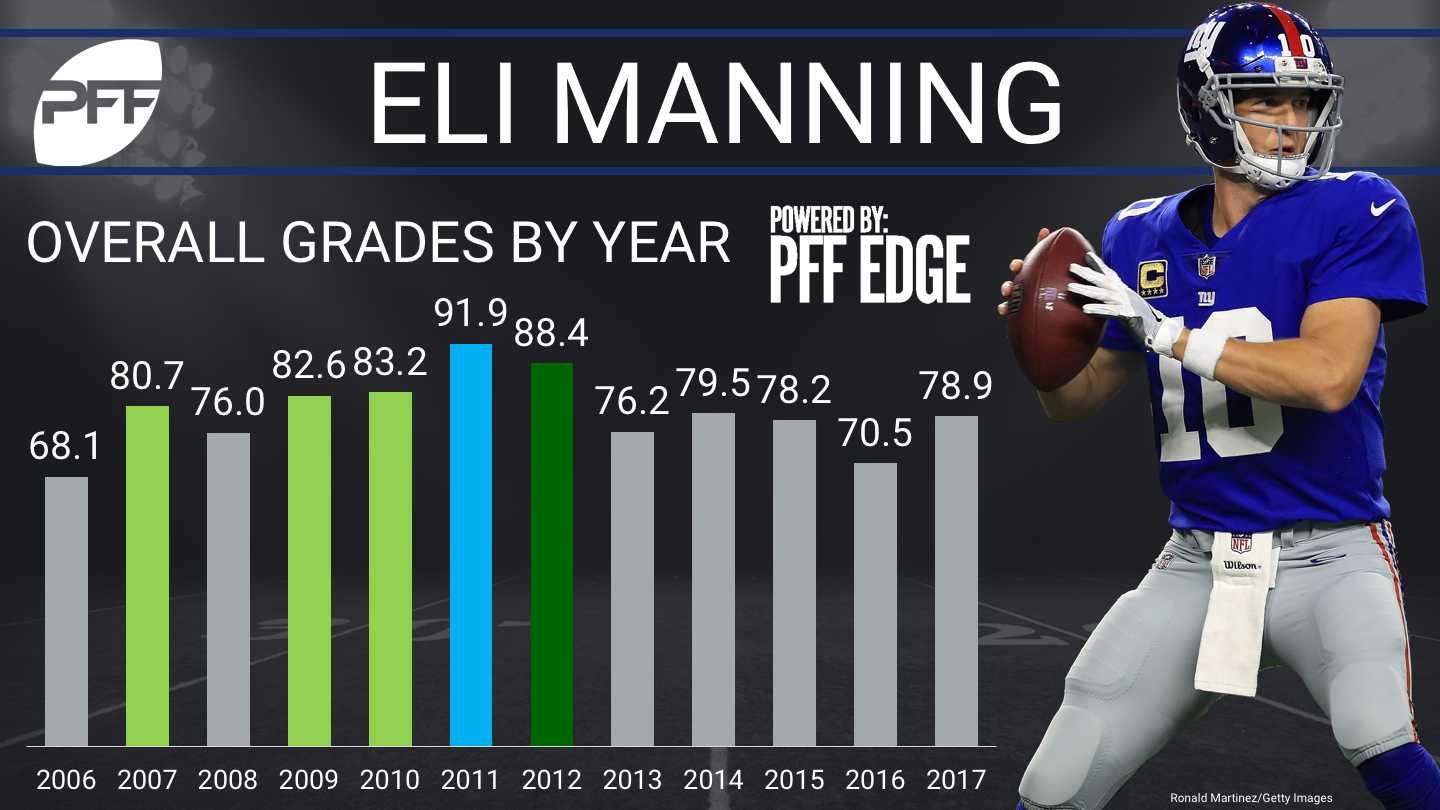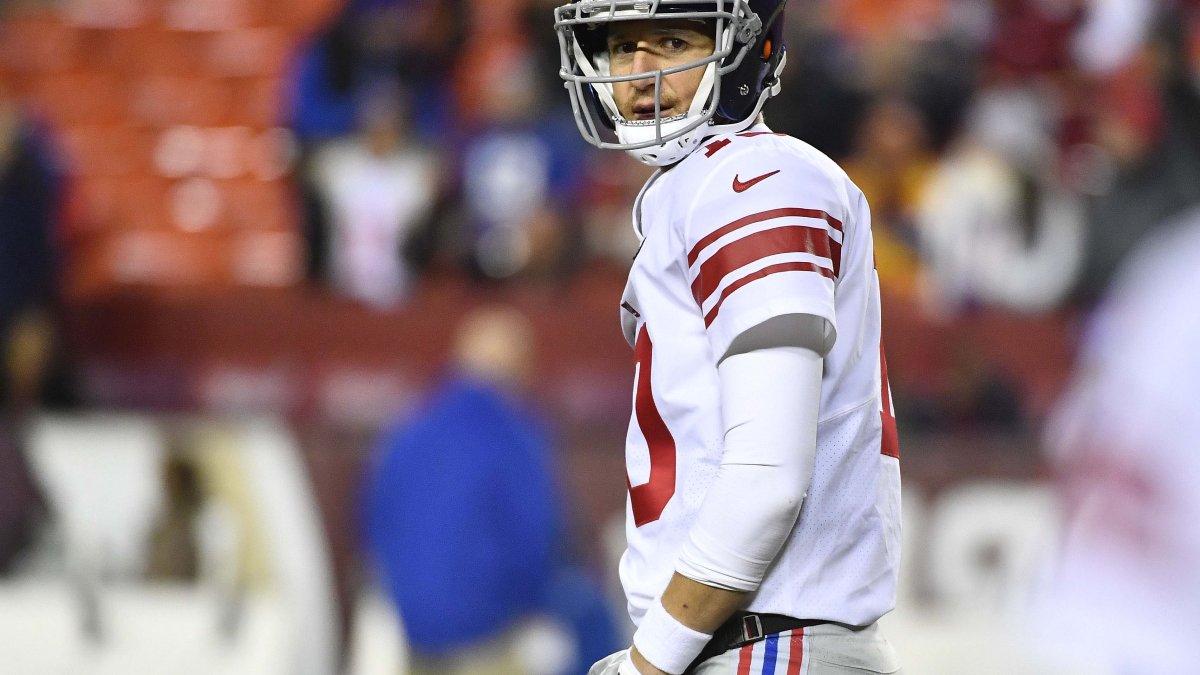For the first time in 210 regular season games, the New York Giants starting quarterback will not be Eli Manning. What that means, is for the first time in PFF history, we will grade a quarterback other than No. 10 for the Giants on Sunday.
He’s been the Giants' starting quarterback that long.
THE BEGINNING
Eli Manning began his career poorly – nearly driven out of New York for his play. His first season in which PFF has data on, 2006, he finished with a mediocre overall grade of just 68.1, but that's when things started turning around.
Manning began making his own name for himself with big plays down the field, no more evident than his improved passer rating on deep passes. During the 2007 and 2008 seasons, Manning finished with a 56.5 (22nd) and 58.3 (27th) passer rating on throws targeted 20 or more yards downfield, respectively. In the following years however, he gave the New York faithful some excitement, hitting marks of 104.9, 99.5 and 103.2 on deep throw passer ratings in 2009, 2010 and 2011, respectively, each a top-7 mark in the NFL.
Manning's continued development saw him win a Super Bowl in 2008, and culminated with a career-performance in the second of his Super Bowl victories, over the Patriots (again) in Super Bowl 46.

Manning had far and away the best season of his NFL career in 2011. Quarterback play tends to fluctuate under pressure, and in 2011, Manning was under an incredible amount (39.1 percent, third-most). Despite that, he delivered a 71.6 adjusted completion percentage (accounts for drops, throwaways, etc.), a whole 3.0 percent higher than the next quarterback when factoring in the playoffs.
Manning finished the 2011 season with an elite overall grade of 91.9, and to this date, the second-highest graded game in a Super Bowl in PFF's history. He followed that up with an 88.4 overall in 2012, marking four years in a row with a grade over 82.6, and five of six years with a grade north of 80.0 overall to sustain his place among the top quarterbacks in the game.
THE MCADOO YEARS
2014 brought current head coach Ben McAdoo’s offensive system to New York, a system that didn’t necessarily fit Manning's high variance style, and rather schemed separation, open on slants and quick outs primarily to get talented receivers like Odell Beckham Jr. the ball in space.
After charting every throw for ball location in 2016, PFF discovered that Manning targeted receivers with two or more yards of separation at the highest rate (53.5 percent) in the NFL. He put the ball on the receiver’s frame only 60.6 percent of the time, the third-worst rate of any quarterback in the NFL.
For all the great plays Manning made, there were plenty of turnover-worthy plays Giants fans know all too well about (plays that should have been intercepted, fumbles recovered by the offense, PFF penalizes the QB regardless of the outcome). In 2014, 4.17 percent of his snaps resulted in such plays (28th in the NFL), in 2015 he ranked 32nd, and in 2016 that dropped to 34th.

While Manning showed stretches of elite quarterback play at times, he was never able to sustain that level of play and was ultimately just not accurate enough. Never in his career did he rank higher than 13th in adjusted completion percentage.
A big reason his grades dipped after the peak season of 2011, were because he was seemingly better suited for the low percentage, vertical Kevin Gilbride system than McAdoo’s. His strength was making Big Time Throws, not with consistency on short passes, in turn keeping the ball out of harms way.
THE FINAL WORD
There are plenty of off-field reasons that deservedly give Eli Manning his reputation, but when looking at his work on the field, his 2011 season may go down as the greatest year of sustained play in the face of pressure that PFF has ever seen. Most importantly, he was a quarterback who delivered in the biggest moments of his career.
Those plays are what he’ll be remembered for, not necessarily the other 14,000 snaps.



 © 2024 PFF - all rights reserved.
© 2024 PFF - all rights reserved.